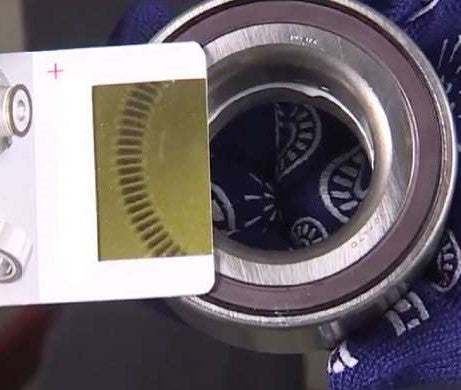The advancements in automotive technology have brought about various safety features, including the Anti-Lock Braking System (ABS). The ABS system relies on wheel speed sensors to monitor individual wheel rotation and prevent wheel lock-up during braking.
Understanding ABS and Wheel Speed Sensors
Before we address the question at hand, let's briefly understand the ABS system and its integration with wheel speed sensors.
Anti-Lock Braking System (ABS)
The ABS is a safety feature designed to prevent wheel lock-up and maintain vehicle control during heavy braking or slippery conditions. It achieves this by modulating brake pressure to individual wheels, allowing them to rotate freely and maintain traction with the road surface.
Wheel Speed Sensors: Wheel speed sensors are crucial components of the ABS system. They are typically located near each wheel and are responsible for monitoring the rotational speed of the wheels. By constantly measuring the wheel speed, the ABS system can detect if a wheel is on the verge of locking up and adjust the brake pressure accordingly.
Considering Your Vehicle's ABS Configuration
To determine whether you need a bearing with an ABS sensor during a replacement, there are a few factors to consider, as the ABS configuration can vary among vehicles:
-
ABS Sensor Placement: In some vehicles, the ABS sensors are integrated into the CV shafts, while in others, they may be separate components mounted near the wheel hub or integrated into the wheel hub assembly. It is important to identify the location of the ABS sensors on your specific vehicle to ensure you choose the correct bearing with the appropriate sensor provision.
-
Vehicle's ABS Status: Not all vehicles are equipped with ABS. If your vehicle does not have ABS, there is no need for a bearing with an ABS sensor provision. However, if your vehicle is equipped with ABS, it is essential to have functioning wheel speed sensors for the system to operate effectively.
-
ABS Tone Ring Type: In older vehicle models, ABS systems may utilize a physical ABS tone ring, which is a toothed ring that rotates with the wheel hub. The wheel speed sensor reads the teeth on the tone ring to determine wheel speed. In contrast, newer vehicles often have integrated tone rings within the hub assembly. When replacing a wheel bearing, ensure that the new bearing includes the appropriate tone ring or provisions for the ABS system in your specific vehicle.
Consulting Vehicle Diagrams and Inspecting Wheel Speed Sensors
To ensure you make the correct decision regarding the bearing with an ABS sensor, consider the following steps:
-
Check for Cables and Wheel Speed Sensors: Look underneath your vehicle to check for any visible cables or wheel speed sensors near the wheel hubs. These sensors are usually connected to the ABS system and are an indicator that your vehicle requires a bearing with an ABS sensor provision.
-
Refer to Diagrams: Consult your vehicle's documentation, such as service manuals or online resources, to locate diagrams of the hub and suspension areas. These diagrams can help you identify the presence and location of wheel speed sensors and determine the necessary bearing configuration.
Conclusion
When replacing a wheel bearing in a vehicle equipped with ABS, it is crucial to consider the ABS sensor integration and your vehicle's specific configuration. Identifying the placement of the ABS sensors, determining the presence of ABS in your vehicle, and understanding the type of ABS tone ring utilized are essential factors in choosing the right bearing. Checking underneath your vehicle for cables and wheel speed sensors, as well as referring to vehicle diagrams, can provide valuable insights to guide your decision.
By taking the time to research and understand your vehicle's ABS system, you can ensure a proper bearing replacement that maintains the functionality and safety of your ABS system.
